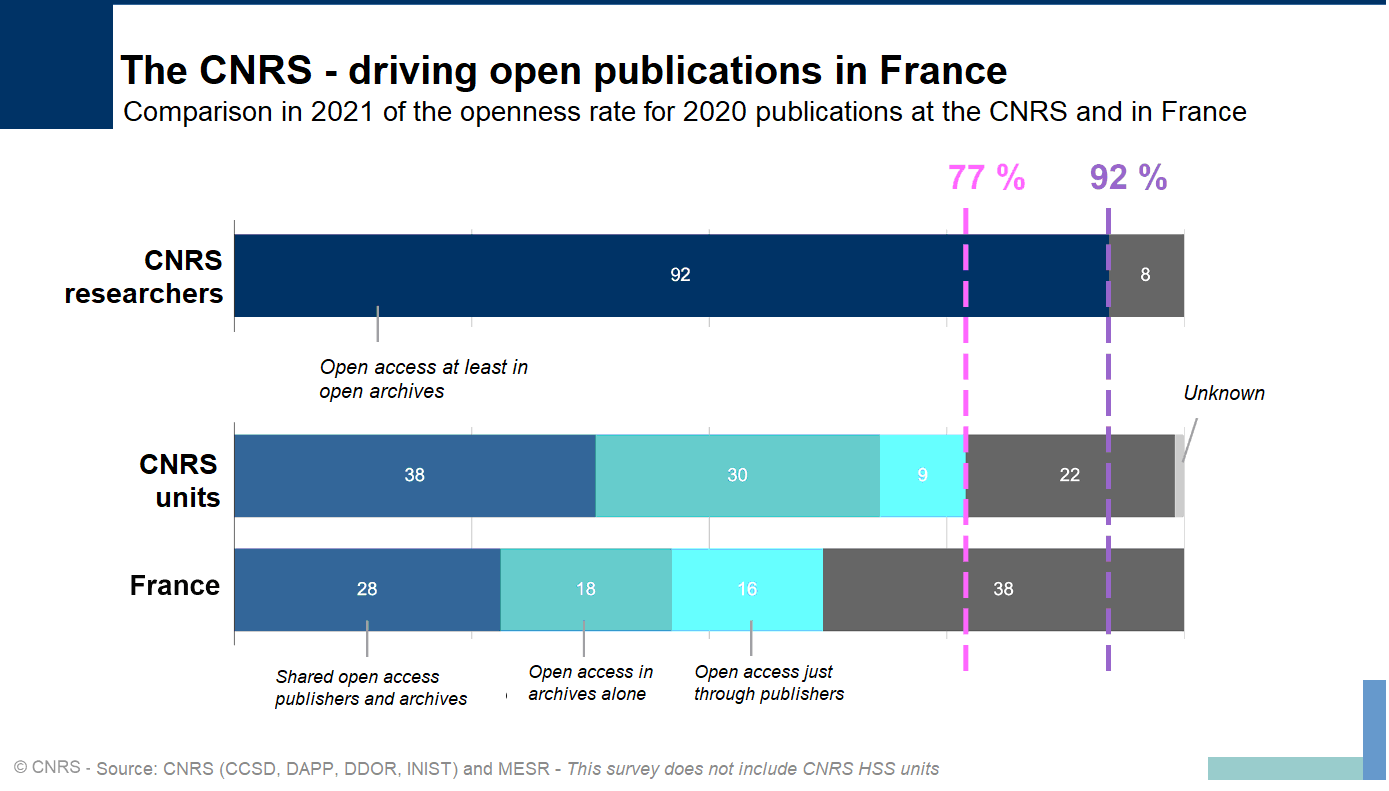The CNRS – leading open science in France
92% of publications by CNRS researchers in 2020 are available in open access. This rate is close to the organisation's objective and considerably above the rates for France and even for units under CNRS supervisory authority.
"The objective of 100% open access was set out in the CNRS Roadmap at the end of 2019 and is close to being achieved", says Sylvie Rousset, the organisation's open research data director. For the fourth year running, the CNRS Open Research Data Department (DDOR) has steered the Open Science Monitor of open access to scientific publications at the CNRS. This has a new feature. The rate is usually calculated on the basis of the units under CNRS supervisory authority and has now also been specifically estimated for publications by CNRS researchers.

The result – 77% of publications from CNRS laboratories and its partners in 2020 were in open access in 2021. The count of these publications was based on the Web of Science (WoS) bibliographic database (which mainly focuses on science, technology and medicine – STM) one year after publication. This represents an increase of 29 points in four years since the first open access rate calculated for 2017 publications in 2018 which was at 48%.
In 2022, the open access rate for 2021 publications from CNRS units will reach 79%, which is a milestone. The Open Research Data Department analysed researchers' annual activity reports (CRAC for STM and RIBAC for HSS1 ) to include humanities and social sciences and thus more precisely identify the full range of CNRS researchers. The open access rate for publications by CNRS researchers reached 92% for 2020 (observed in 2021).
This rate is calculated through analysis of a total of 25,364 publications. These include 20,593 articles published in journals in 2020 that scientists included in their CRAC (18,890 articles) and RIBAC (1703 articles) reports and 19,758 of these are open access. The total also includes the 4771 articles published by CNRS researchers and identified in the WoS which could have been included in the CRAC corpus, 3605 of which are open access. Overall, 23,363 articles out of 25,364 are available in open access. "Since 2020 there has been strong encouragement for researchers to deposit articles in the HAL open archive because this is a positive point in their CRAC reports. This has led to a spectacular increase in the open access rate of CNRS units", analyses Sylvie Rousset. "The change in scope shows CNRS scientists are particularly eager to adopt open access".
The CNRS's open science policy supports the use of open archives like HAL (French link) to publish in open access. To achieve this, the policy is based on levers provided for by the 2016 Digital Republic Law. This law authorises scientists in any discipline to deposit the 'accepted author manuscript' (AAM, the latest version before publication) of their article in an open archive, with or without an embargo period and regardless of the editorial policy of the journal the article is to be published in.
However, this increase also reflects changes in the practices of scientific publishers. These are now turning to the commercialisation of open access with publication charges being applied increasingly systematically. The CNRS is encouraging its scientists to stop paying to be published.
This rate for CNRS researchers is also higher than the national rate given in the French Open Science Monitor (French link) managed by the French Ministry of Higher Education and Research. This rate rose from 62% in 2021 for all 2020 publications to 67% in 2022 for all 2021 publications.
- 1It is compulsory for CNRS researchers to deposit their publications in the HAL open archive via the CRAC (researchers' annual activity report) form for STM researchers and the RIBAC (compilation of information for an observatory of research activities) form for HSS researchers. The RIBAC forms were analysed by CNRS Humanities and Social Sciences.




